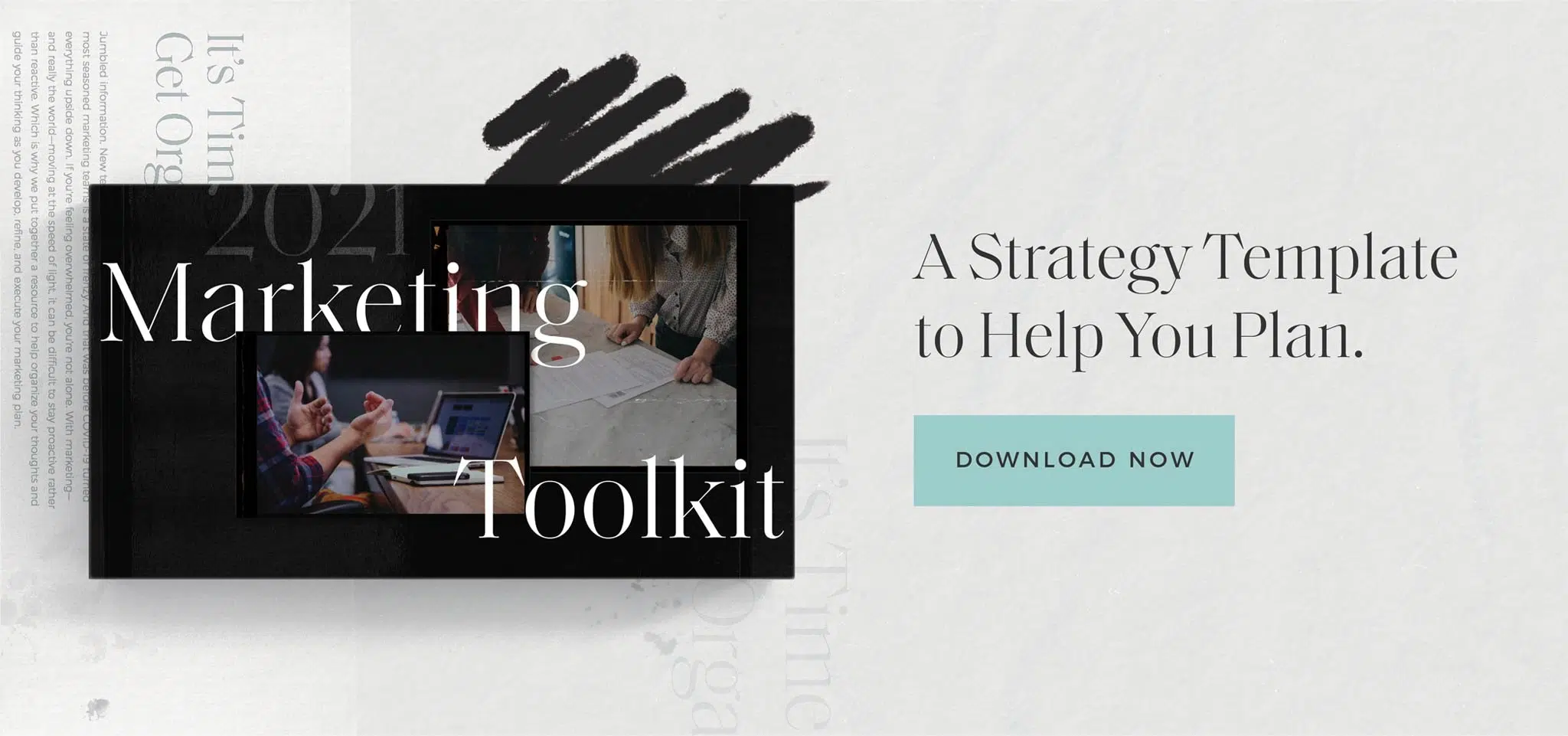Talking about money is, a lot of the time, uncomfortable. That can be true especially in the process of buying marketing—as a business leader, you might be certain that you need consulting help, but have no idea what exactly it is that you’re trying to buy. But many businesses are looking—Gartner’s annual survey of CMOs showed budget issues in 2020, for obvious reasons, but as the economy recovers, marketing is one place CMOs are expecting spending to increase once again.
So let’s talk about where that money is going. When you pay for marketing, what are you actually paying for? Let’s get into it.
1. Onboarding and discovery
If you’re working with smart marketers, chances are good that the first thing you’ll experience in your engagement with them is the “get to know you” meeting. Depending on what you’re doing with them, this could be a short introduction, it could be an all-day deep dive and download on your business and industry from top to bottom, or it might be somewhere in the vast middle between those options.
This will look different based on the engagement, but it will also look different based on the size and complexity of your business and industry. The more there is to learn, the more involved the process is going to be, obviously. If we’re going to start working with General Motors, it takes more effort to become an expert in their business than it would with a small local bakery.
So when we’re talking onboarding costs and fees, the size of the project will determine the total cost. A production agency is going to cost less since they don’t necessarily need to understand how your business works to get the job done—they’re just designing a business card or email template, following your existing brand. Working with a strategic partner will be a bit more expensive, as they’ll need to go through the full process of becoming intimately familiar with every part of your business in order to successfully manage your holistic marketing strategy. And of course, to do that with a larger multinational business, the agency will need more people and more time to get that intimate knowledge, and therefore will charge more for that.
The cost of onboarding
That number will tend to sit around $10k for a “local retail shop”-sized business or a production-based engagement. For a larger (national or international) business or a holistic strategic partner, it could be $20k or more. This might be a line item on your statement of work, or your partner might make up the time spent learning your business in their hourly rate or in another type of miscellaneous fee. That shouldn’t affect the amount.
2. Technology
Marketing technology is becoming a more and more integral part of any smart strategy every year, but it’s not cheap. There are two ways technology fees might show up: the cost of the technology needed to do the work, and licensing fees for technology the client business is using.
In the first instance, we’re talking about a charge to cover the costs of the partner agency purchasing new software or hardware that’s necessary to execute on the marketing strategy. This might be as simple as paying for Adobe Photoshop, or paying for reporting software like Domo. It could also involve purchasing cameras and ring lights to shoot simple video, or a microphone setup to record audio for a podcast.
In the second, we’re talking specifically about the martech you’re using for things like content management or marketing automation. If the agency you’re working with licenses the software on your behalf, they might take a cut because they’re handling the service of that software. It’s unlikely that a client would pay for the technology in full, as almost anything that’s needed could be split between a number of clients.
The cost of technology
Like we said with onboarding, technology might be budgeted as an additional fee or simply included in the hourly cost of the agency, and there shouldn’t be much of a cost difference either way. Depending on the number of required technology engagements, technology fees can range from as little as $200 a year to $20k+. Like with onboarding, a lot of this will likely depend on the size and complexity of the business and the level of strategic consultation involved in the marketing partnership. The more involved your agency is, the more likely it is that they’ll need to engage more martech to manage it all.
3. Media
If part of your marketing strategy includes digital marketing—and, since it’s 2021, it almost certainly will, if you’re doing it right—that is obviously going to cost money. Google alone generates $150 billion a year from ad revenue, so that money’s coming from somewhere. In most cases, media and advertising agencies will take a cut of the ad spend as a fee for managing purchasing. That’s especially likely if your marketing partner is also in charge of the money, and their card is on file with the media platform. So in other words, you’ll pay for the ads you’re placing, and also for the marketing agency you work with to manage the system.
The cost of media fees
In general, the agency’s cut of media spend is going to be between 3% and 15%. So if you’re spending $1 million on paid media, they may take up to $150k in the deal. You may also get charged for platform fees, which come straight from the advertising platform (e.g., Google, Facebook) and are passed along to the client.
4. Services markup
When your marketing partner facilitates a service relationship as part of the marketing process, that’s typically going to have an associated cost. Let’s say your business is holding an event, and you need to print itineraries and other collateral to distribute to guests. Chances are your marketing agency won’t actually print them—we don’t have an industrial printer at Element Three—but they’ll have a relationship with a printer, or a number of printers that might each be better for specific situations. When the agency outsources that work, they’ll mark up the cost to cover their role in vetting, organizing, and managing the vendor.
The cost of a service markup
Typically this is going to run around 10% or 20% of the cost of the service. Obviously the actual monetary value then depends on the cost of the service, which will depend on its scope. Printing a massive banner to cover the side of a downtown hotel is going to be more expensive than 100 leaflets for your small speaking event.
5. Travel
Now that travel is becoming safe once again, businesses are taking advantage of the opportunity. As proficient as we may have become at remote communication in 2020, in-person is almost always better—so whether there’s some physical distance separating a business from their marketing partner, or they’re helping out with an offsite event, the costs of travel are, once again, an issue. Typically a marketing agency will either budget travel as a separate itemized cost or it’s built into the hourly rate.
The costs of travel
Marketers do not make money on travel; the cost to the client is simply a reimbursement. Any hard costs like food, airline tickets, or sleeping accommodations are simply passed through without any kind of markup.
6. Project costs and pricing
So, yeah, on top of all that you still have to pay for the actual marketing. That’s going to be the meat of the budget—this is where most of the money a business spends on marketing goes. Different marketing consultancies will use different billing systems, so depending on who your business is working with, this might look a bit different. Here are a few examples:
- Fixed fee: A scoped cost for a specific project. Client and agency agree on a number, and no matter what happens, that’s how much it costs. For example, a specific brand project might be scoped to $150k, and even if the audience research portion goes much more quickly than expected, there’s no discount.
- Time and materials: The agency works against the time it takes to complete projects, and materials used are tracked. At the completion of the engagement, all costs are compiled in an invoice and that invoice goes to the client. Typically there’s a budget ceiling in mind, and communication is important if that ceiling starts to get close to being breached. In other words, a consultant will create a campaign that will cost up to $100k (or possibly less, depending on efficiency and avoiding problems) and will bill the client as they make progress against the project.
- Retainer: A price is agreed for a fixed amount of time per month that the marketing consultant will spend on the client. That time can go towards anything that the agency and client determine has importance that month.
- Hourly pricing: Work has an associated hourly rate, and the cost is wholly dependent on the amount of time it takes the agency to complete the work.
- Value pricing: The cost of a project is based on the value of the service that’s being provided. For example, a marketing agency might say that based on their observations and experience, a new website is worth $125k to a client, so that’s the price that’s charged.
All of these pricing models can be used by an agency in different situations—that is, an agency isn’t necessarily going to run everything through retainers if that’s not the best option for a client. In most cases clients and agencies can make this decision together as a part of the kickoff process, or if you’ve worked together for a while a certain type of repeatable project might always carry with it a certain billing system.
7. Change orders
A change order comes into play when there’s a shift in deliverables required, timelines, or budget. Change orders aren’t always necessarily bad—that is, they don’t always have to mean someone messed up—but they do affect how much you’re paying. For example, maybe a project was originally slated to take six weeks but the client wasn’t able to give feedback on time because of an emergency with one of their own clients. There’s nobody to blame there, but if the marketing team waits for ten days for feedback, that changes the timeline. Or, if the timeline can’t change, more resources might be needed to get the same work done in a shorter timeframe, which means the cost changes.
Either way, it’s something that both sides need to be prepared to handle, if and when it comes up.
Communication is key
One of the biggest mistakes that marketing agencies and prospective clients alike make when they’re feeling each other out during the prospecting process is not talking about price. It’s going to come up eventually, so there’s nothing wrong with having the conversation earlier rather than later. It’s a much smoother conversation to have when both sides are on the same page, and making sure that future clients know what they’re going to be paying for is a helpful step.
Don’t be afraid to talk price. Embrace it. And get to the right answers together.





